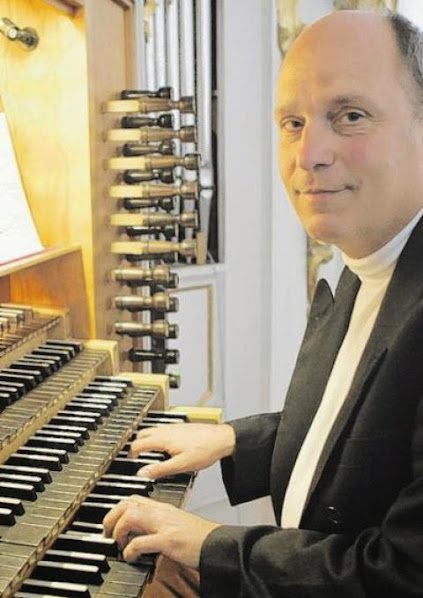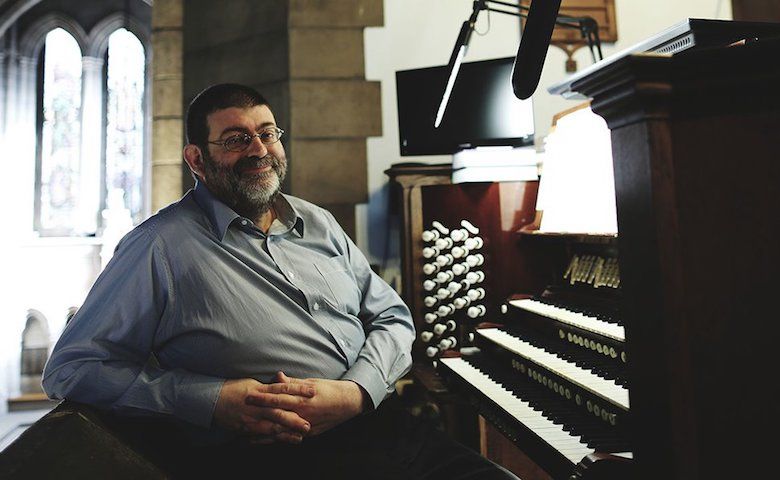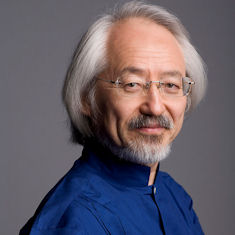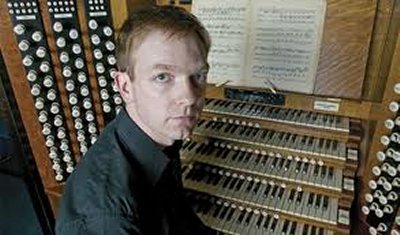Toccata
Bach's Toccata and Fugue in D minor is one of the most popular pieces of organ music. There are many different recordings of it. There are constant arguements over which is "the best", but there really is no such thing as best - they are all different though and this simple little site tries to shed some light on this. We haven't identified the recording labels/numbers as these recordings often appear on different compilations, but you can easily duckduckgo them. We made this simple site using just Markdown, edited in Typora and exported as HTML.
Peter Hurford
:format(jpeg):mode_rgb():quality(40)/discogs-images/A-842253-1296498232.jpeg.jpg)
If you want a dead straight, well played, well recorded version Hurford's is for you. Hurford's approach adds honesty and integrity to his immaculate articulation and stylish delivery of the music. His complete understanding of musical structure enables the music to unfold in long, sweeping paragraphs. He plays superbly and is not trying to do anything other than play the piece well. He takes his time here without labouring anything. If I was to only have one recording this would be it.
You can hear him on several different recordings but my favourite is the 1984 recording Decca 411 929-2 recorded August 1982 at the Concert Hall, Sydney Opera House. The recording, as you would expect of Decca, is very good, and you may be pleasantly surprised by the quality of this organ - in a building that is fabulous on the outside but lack-lustre inside. If you want a good straight recording of the piece, this could be for you.
Helmut Walcha
:format(jpeg):mode_rgb():quality(40)/discogs-images/A-841674-1187879357.jpeg.jpg)
And, now for something completely different. Watcha's 1956 baroque style recording on a relatively small organ is highly rated by purists. Walcha was incurably blind since childhood but a stupendous musician nevertheless. He argued that Bach should be played on Baroque organs, rather than "bombastic" Romantic-style instruments so lovers of deep notes will be disappointed. His performance is restrained and while "authentic performance " purists may object to some aspects of Walcha's playing, the performance is musical to the bone.
Simon Preston.

Simon Preston's modern DG recording is simply stunning. Made in the Kreuzberg church in Bonn, from the start it is breathtaking and by the time it is over, you are left exhilerated and exhausted. His mastery of the keyboard is absolute and fortunately he does not try to add some of the affectations that irritate on some other recording. This recording does not show off the full power of the organ as Preston concentrated on the keyboard leaving heavy pedal bass sounds to others. As a piece of technical playing, it is unsurpassed. Don’t confuse this with his older 1960’s recording at the Festival Hall – his playing was good then – it was great later. For some reason this recording is difficult to get hold of although It features on a couple of otherwise innocuous CDs. Try Classic FM - The Full Works.
Ton Koopman.
:format(jpeg):mode_rgb():quality(40)/discogs-images/A-836665-1362782223-5356.jpeg.jpg)
Played on the Maassluis organ in Grote Kerk built in 1730-32 by Rudolf Garrels.Restored in 1975 the organ has 47 stops. 16’ and 32’ bass pipes were added at a later date so this is a seriously big organ.
Recording made in 1983
Koopman has great fun on this recording but I sense that the fun is for his benefit not ours. He adds little affectations that can be irritating and are there to demonstrate that he can do them rather than to add to the music. He seems to be in a hurry to get through the piece. If this were a warm-up or finale piece at a live concert by Koopman, the audience would go wild but that does not work on a CD.
Franz Hauk

Played on the Great Klais Organ at Ingolstadt Munster, Germany. 1996
This is a relatively modern digital recording. For the technical amongst you, it was made using a 24 bit Nagra recorder with Prism AD converters B&K microphones. Noise-shaped to 16 bit for the CD. Not technical - well, this is good stuff.
When you hear the opening bars, it sounds like it was made in an aircraft hanger! The huge amount of reverberation means that the ears have to work hard to follow the detail of the playing. But, after this initial surprise, our ears adapt and what comes over is a very well played version – a little brighter than Hurford’s but not as flippant as Hauk’s. Then, the technical quality of the recording starts to assert itself. The deep pipes of this fabulous organ are recorded to absolute perfection.
Carlo Curley

Played on the Girard College Chapel, Philidelphia organ.
The late Carlo Curley was a showman and largely self-taught. He knew how to wow an audience by giving them what they want, not what amused him. This is organ playing at it’s most flamboyant - huge and deep and powerful. Curley’s playing is sometimes a little quirky and he may dwell on a note here and there, but it is to good effect. Although the recording claims to be DDD, there is considerable tape hiss in the quieter passages but this is a very minor problem as there aren't many quieter passages! The actual recording quality is OK but not up to the best modern standards - the bass is full but a bit wooly. When the music stops, you are left with a feeling of awe – just what the composer wanted. If you had to choose just one recording and depth of bass was not an issue but drama was, this could well be it.
Christopher Herrick org

Recorded on the Metzler organ of the Stadtkirche, Rheinfelden, Switzerland.
Elegance and Finesse are two words to describe Christopher Herrick's playing. In matters of registration, tempo, articulation and phrasing, Herrick displays immaculate taste.
The modest two-manual Metzler, built in 1992, makes an enchanting sound, and the recording fully supports the superlative artistry of the playing.
Kevin Bowyer

Recorded on the Marcussen organ of St Hans Kirke, Odense, Denmark.
Bowyer’s account of the Toccata and Fugue in D minor is invigorating, exciting and very fast. Much thought has gone into the choice of organ and this instrument serves its purpose admirably, roaring magnificently when required or being tranquil where that is required.
David Goode

What Goode does with the piece shows that he’s put a lot of thought into this often over-heard work and considered how it might have been heard (and played) by Bach himself. One thing that immediately leaps out is the use of some quite extensive ornamentation – not merely mordents and so forth, but brillante scalic flourishes leading into cadences. We’re not used to hearing this level of ornamentation of Bach today, for several reasons, but the practice is perfectly legitimate from a historical perspective; a wealth of documentation attests to contemporary approbation for performers' improvised embellishments, so the great master surely wouldn’t have batted an eyelid.
The range of colours Goode draws from the Trinity College Cambridge chapel organ is also impressive.
Masaaki Suziki

Schnitger/Hinz organ in the Martinikerk, Groningen
The recipient of the 2012 City of Leipzig Bach Medal, Masaaki Suzuki has earned an enviable reputation as an interpreter of the music of Johann Sebastian Bach – as a reviewer in International Record Guide has put it: 'With Suzuki you can hear Bach's heart beat'. The recording was made in Groningen's Martinikerk, with Suzuki performing on the renowned organ, one of the most important and impressive in the Netherlands. The instrument is superbly captured here and Suzuki uses it with flair and imagination.
Craig Leon

Craig Leon (synthesizer), Jennifer Pike (violin)
Sinfonietta Cracovia
In January 2015, Moog Music, the 60-year-old analogue synthesizer company built a new version of the large format modular synthesizers first introduced by its founder, Dr. Robert Moog in 1964. It presents piece in a compelling and contemporary way. Leon blends his love and mastery of classical music, electronic music and synthesizers and is joined by acclaimed British classical violinist, Jennifer Pike (the youngest ever winner of the BBC Young Musician of the Year competition) alongside the Sinfonietta Cracovia.
“An utterly exhilarating listening experience which will captivate old fans and newbies alike…ably supported by Sinfonietta Cracovia and with Pike so obviously getting the project, Leon manages to leave you with the sense you're hearing this music for the first time and having an absolute ball into the bargain.” Gramophone Magazine, August 2015
Robert Quinney

Metzler Organ of Trinity College, Cambridge
Robert Quinney is Director of Music at Peterborough Cathedral. As Sub-Organist of Westminster Abbey he played at the Royal Wedding of Prince William and Catherine Middleton in April 2011.
“Several of Bach's greatest hits for the organ are heard here on an ideal instrument (Trinity College, Cambridge) in sober performances from Robert Quinney.” BBC Music Magazine, Christmas Issue 2013
“the most distinctive feature is the way Quinney's authoritative distillation of the music never results in dry, academic essays - while, also, never playing to the gallery with maverick rhetorical effects...Quinney's Bach gets to the heart of the music with refreshing clarity and a communication born of genuine understanding.” Gramophone Magazine, Awards Issue 2013
“ Quinney brings a remarkable freshness thanks to his flamboyant decorations.” Sunday Times, 4th August 2013
Katerina Chroboková

Recorded At The St Willibrord Basilica In Echternach, Luxembourg, August 2829, 2015
Splendidly and singularly performed on the wonderful four-manual organ of the Basilica in Echternach, Luxembourg’s oldest town.
“Katerina comes across as a remarkably strait-laced organist, delivering Bach’s BWV565 Toccata with beautifully crisp articulation and a minimum of effect, especially in a fugue where echo effects are decidedly subtle” Gramophone Magazine, July 2016
Johann Sebastian Bach was a German musician and composer who wrote throughout the 18th Century. For most of his career, Bach worked as an organist and choirmaster at various churches throughout Germany. From 1723 he was employed by St Thomas' Church in Leipzig, where he composed a cantata (a vocal composition with an instrumental accompaniment, that the congregation could join in with) for every single Sunday service over the course of 17 years, as well as additional special pieces for festivals like Christmas and Easter. That's a lot of music!
What makes Bach unique is his absolute mastery of the strict compositional techniques of the day. His innate talent enabled him to use these formal techniques and structures to their full effect, whilst still making his music expressive, exciting and accessible. Basically, he wrote brilliant tunes for the instruments and voices available to him at the time, but stuck to the rule-book of 18th Century music. In a lesser composer's hands, this might have sounded a bit mathematical, mechanical and boring – but not with Bach! This is especially evident in the Toccata and Fugue in D minor. It's written in two sections: the Toccata (meaning "to touch") - is a sort of free-form introduction, involving lots of fast scales and arpeggios (broken chords); the second part - the Fugue - is characterised by complex overlapping repetitions of a main theme played alongside different counter-melodies. The piece is known for its majesty, drama and relentless rhythm. It's not only Bach's most famous fugue, but also the most famous fugue by any composer, ever.
Watch the orchestral performance of Bach's Toccata and Fugue in D minor, BWV 565, arranged by Stokowski from the BBC Philharmonic Orchestra perform They are conducted by Alpesh Chauhan.
A bit about organ bass stops - there is a lot of mis-information around so we cannot be absolutely sure that the following is correct - but we think it is!
The longest pipe in an organ is usually in the pedal department and on most organs is 16 foot in length. Cathedral organs usually have one or two 32 foot ranks, the 32 foot pipes having a frequency of just 16 Hertz! The longest pipes in existence are 64 foot long, but these enormous pipes are few and far between. There are only two organs in the world having pipes that are actually 64 feet in length. The famous Hill organ in Sydney Town Hall which has a 64 foot Contra Trombone and the colossal Midmer-Losh organ in Atlantic City which has a 64 foot Diaphone-Dulzian.
- The loudest organ stop in the world is the Grand Ophicleide located in the Right Pedal division of the Boardwalk Hall Auditorium Organ. It stands on 100 ft of wind pressure.
- There are only two true and complete (acoustic, non-digital, going down to the sub-sub-contra-C) 64 stops in the world: the Contra-Trombone 64 in the Sydney Town Hall Grand Organ (click here for a sound sample), and the Diaphone-Dulzian 64 in the Boardwalk Hall Auditorium Organ (click here for a sound sample). The lowest note of these stops has a frequency of 8 Hz. Because of the limitations of most loudspeakers and the limitations of human hearing, the listener will not be able to hear the lowest frequencies in the sample, but may "feel" them and hear the harmonics above them.
- Many large organs have a 64 stop in their stoplist, but nearly all of these are acoustic imitations (32 combined with a 21 1⁄3 extension creating a 64 resultant impression) The Boardwalk Hall Auditorium Organ is capable of creating a resultant 128 stop by combining its 64' and 42 2⁄3' stops.
An 8 ft pipe normally gives a note of 64 hz
A 16 ft pipe normally gives a note of 32hz (just about heard but certainly felt)
A 32 ft pipe normally gives a note of 16hz unlikely but possibly heard at high volumes only
A 64 ft pipe normally gives a note of 8 hz only felt and only played with other harmonics which are heard.
A 128ft pipe normally gives a note of 4 hz only felt and only played with other harmonics which are heard.